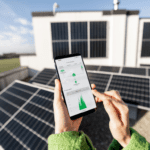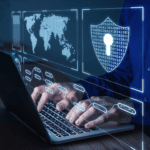In 2022, three European renewable energy companies became subject to a massive cyberattack that gravely affected their remote-control systems–the same systems powering about 7,800 wind turbines daily.
This incident was just one of the many cases of cyber threats encountered within the renewable energy space today. This trend will most likely continue in the years to come as global power systems shift towards solar, wind, tidal, rain, and geothermal energy sources. Moreover, at least 70% of the global energy supply will likely become reliant on Variable Renewable Energy Sources (VRES) by 2050 as coal and gas decline. And because most of these energy sources directly connect to regional and national grids and are operated with systems that offer little to no integrated security features, they are often left vulnerable to many cyber risks.
With renewable energy being a high-growth industry emphasizing connectivity and technological advancements and its position as a major driver for global security, it is no surprise why such cybersecurity threats have become more prevalent and increasing in scale among renewable energy businesses. These cybersecurity concerns, along with the industry’s complex regulatory compliance demands, further highlight the need for safe and secure systems to be in place.
Data Risks in Renewable Energy
Cybersecurity threats, when successfully executed, could lead to many serious repercussions. Attacks could lead to a complete loss of control over critical hardware and processes, further leading to physical damage and interruption of critical services and electricity-dependent infrastructure. Responding to a cyber-attack also entails expenses from detection and investigation to recovery of millions or billions of total damages.
These are just some of the several motivations behind such data risks:
- Monetary Gain – Disrupting the energy supply could lead to companies incurring significant losses through ransom payments extracted from their businesses. When hackers gain unauthorized access to energy systems, they get to control important business processes and use that advantage to demand large sums of money from the operator.
- State-sponsored Attacks – Cybersecurity threats can also be motivated by disrupting the national or global order. Attacking a nation’s energy network would significantly weaken its economy, negatively impacting its national security and public services, ultimately leaving it vulnerable to political leverage.
- Activist Agendas – Some hackers disrupt energy networks purely out of motivation to address environmental concerns and advance their ideological agendas. By attacking energy providers, they get to raise awareness of their cause.
- Intelligence-gathering – State-sponsored spies can also carry out attacks targeting the renewable energy industry to gather classified intelligence on a country’s energy capabilities. Acquiring such data brings a competitive advantage and paves the way for more strategic planning.
These cyber-attacks often target areas with safety gaps within digital renewable energy systems, which include misconfigurations and lack of support for software, unsecured application program interfaces (APIs), management and control software, inaccessible physical location of sites, outdated infrastructure, and lack of regulation and security coordination.

The Role Renewable Energy Businesses Play in Ensuring Data Security
There are multiple factors green energy businesses should consider in upholding safety and security within the energy network; factors encompass the security policies they have in place, the safety procedures being implemented, the state of their infrastructure, and even the software management platforms they are utilizing. Some fundamental aspects of it are as follows:
- Consistent risk assessment – The success of any risk management process is largely linked to the risk assessment that came before it. Energy businesses will benefit tremendously from identifying hidden security loopholes before they become apparent, ensuring the right procedures are in place during a security breach.
- Robust cybersecurity measures – With energy systems largely reliant on online services in the digital age, ensuring a secure digital environment is a no-brainer. This comes in the form of putting up firewalls, intrusion detection and prevention systems, and other secure digital management protocols.
- Partnering with a trusted outsourcing provider – Outsourcing key business functions would also benefit the long term. It addresses many key challenges from fluctuating marketing demands to underutilized technologies and ever-changing regulatory requirements.
A Leader in Safe and Secure Renewable Energy Outsourcing
ClearSource has been partnering with leaders in the renewable energy sector to deliver innovative outsourcing solutions grounded in values prioritizing people and quality. Today, we have become a trusted partner to leading businesses across different industries, boasting a global talent pool of outsourcing experts.
Learn more about our data protection capabilities by reading our blog Tech-Forward Security: Advanced Technology To Safeguard Data.
Interested to know more about our renewable energy outsourcing services? We’d love to hear from you!






